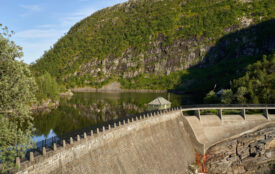Europe’s forests increasingly under pressure from climate-driven disturbances
European forests are being increasingly affected by natural disturbances, a new ground-based observation study shows.
An international team of forest scientists from Wageningen University & Research (WUR), the European Forest Institute (EFI) and 19 other research organisations across Europe investigated forest disturbances in Europe over the past 70 years and reported a statistically significant increasing trend in the paper “Significant increase in natural disturbance impacts on European forests since 1950”, published in the scientific journal Global Change Biology.
Natural disturbances are important drivers of forest ecosystem development. By killing trees, disturbances modify the environment, making space for new, young trees to grow, ultimately ensuring the regeneration of forests over-time, while dead trees harbour multitudes of habitats for biodiversity. However, the intensification of disturbance regimes reported in the last decades is raising concerns about disrupting the provisioning of ecosystem services our forests provides to society.
Effects of forest disturbances
When forests get highly disturbed, they release carbon emissions into the atmosphere, instead of storing the carbon. Unscheduled harvesting of damaged timber often leads to collapsing market prices and subsequently limits the future resource supply for the European bioeconomy. Moreover, the destruction of habitats and decreasing forest carbon sinks may compromise the achievement of European climate and biodiversity targets.
Increase & magnitude of disturbance trends
“The analysis of disturbance trends showed that damage from all the disturbance causes – wind, fire, bark beetles, other biotic and other abiotic agents – clearly increased from 1950 to 2019”, says the leading author of the paper Marco Patacca (WUR). The estimated average damage in Europe amounts to 52.4 million m3 of wood per year between 1950 and 2019. However, if you look just at the last 20 years, this average has risen to about 80 million m3 per year, equivalent to 16% of total annual wood harvest in the EU. At regional-national level, damaged timber sometimes even exceeded 100% of the planned harvesting, ultimately jeopardising long-term forest management plans.
Unique collection of data
The research team put together a unique collection of ground-based, empirical observations of disturbance damage data in Europe, consisting of 170,000+ records. The data have been collected in the Database of Forest Disturbances in Europe (DFDE) and made publicly available via the European research project I-Maestro. To overcome the scarcity of historic monitoring data, the team created a network of 20+ country and European experts in the field. They gathered countries’ data in paper form and local languages and combined expert knowledge with statistical models to reconstruct forest disturbance history in 34 European countries.
Climate-driven disturbances
The researchers found that all studied disturbance causes increased, but bark beetles and other biotic agents – like insects, diseases, fungi and other organisms – showed the strongest rise. Because those causes are known to be very sensitive to climate change, the group of scientists expect further and increasing damage, as changes in climate keep unfolding. However, many of these agents are poorly captured in current reporting. Drought impacts are also difficult to disentangle from secondary disturbances and lack reporting
Need for pan-European monitoring
The analysis points out deficiencies in national reporting practices and stresses the pressing need to establish a pan-European, homogenous monitoring system consisting of a combination of satellite and ground-based forest disturbance data acquisition. Such a system would be pivotal to understanding and adapting to shifting disturbance regimes, assessing policy trade-offs and outlining alternative forest management practices across European forest regions. “To understand disturbance dynamics in forest ecosystems and their interactions with the climate, data are crucial,” says Patacca. “If we don’t understand these dynamics, it is not possible to design alternative, climate-smart management practices to adapt our forests to future changes in disturbance regimes”.
- “Significant increase in natural disturbance impacts on European forests since 1950.” Global Change Biology. [DOI: 10.1111/gcb.1653]








